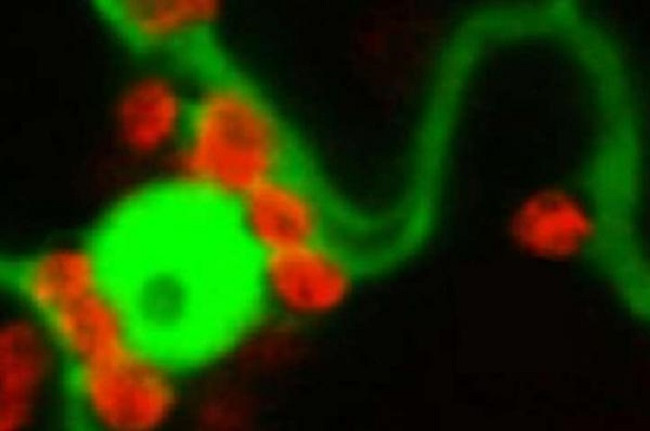Plants use Hydrogen Peroxide as sunscreen
Plants need sunlight to survive. But like humans, plants can suffer from overexposure and of course sunburn.
A new study shows that Hydrogen Peroxide plays an important role in protecting plants from the sun. Hydro Peroxide, symbol H2O2, is used as an effective sunscreen.
H2O2 is a by-product of photosynthesis. Previously it was considered a chemical reading, acting as a sensation and signaling in plants, but scientists could not determine where and how it manifested in the plant.
The new study, detailed in Nature Communications, says the substances Hydrogen Peroxide moves from plant cells called chloroplasts to the nucleus, altering cell responses to light levels. Different sun light.

Nick Smirnoff, a researcher at the University of Exeter, said: "It is important that the tree can detect the amount of light around it, and how much it absorbs, so the plant can maximize its efficiency from photosynthesis, but plants also have to adjust to protect themselves, because high light levels can damage leaves' .
The researchers used a fluorescent protein to monitor H2O2's movement and behavior inside plant cells. Biological markers show that Hydrogen Peroxide moves from chloroplasts to the cell nucleus, where the gene is controlled to regulate photosynthesis and ensure leaves are not sunburned.
Some chloroplasts that are directly connected to plant nuclei also allow H2O2 to move easily.
Marino Exposito-Rodriguez, a researcher at Essex University, said: "This breakthrough experiment can be done with the development of fluorescent protein sensors Hydrogen Peroxide, allowing us to observe the movement of H2O2 in plant cells in real time ".
Because H2O2 plays a role in regulating photosynthetic rates, this chemical can be designed to increase crop yield.
You should read it
- 8 types of plants that resist ultra-good electromagnetic radiation for those who regularly use computers
- The first photosynthesis happened about 1.25 billion years ago
- 12 types of ornamental plants clean the indoor air
- Top 4 best selling hot and cold water plants today
- What is UV rays? Which UV level is safe for humans?
- How to Protect Plants
- Photosynthesis is increasing globally
- How to protect skin from UV rays while indoors?
- Plants feel pain when they are eaten and have a defense mechanism against it
- 7 species of plants have special abilities like humans
- Use a hot water tree with a child lock to ensure safety
- Research shows that: X-rays can turn diamond into graphite
May be interested

The most bizarre creatures are found by scientists under the sea floor of Australia

Do not confuse the vegetables as weeds, you will be shocked to know its miraculous use!

Up to 8.9 km2, this is the most giant creature on Earth ever known

Falling into the river, the stork was re-eaten by the piranhas in the blink of an eye

Watch the giant python swallow whole eyes for 10 seconds

'Sky monster' is real!






 Latest Peroxide Code and how to enter the code
Latest Peroxide Code and how to enter the code How to use sunscreen properly?
How to use sunscreen properly? What is hydrogen water? What does hydrogen water do for health?
What is hydrogen water? What does hydrogen water do for health? If you don't want cancer to knock on the door, don't forget to apply sunscreen to your eyelids!
If you don't want cancer to knock on the door, don't forget to apply sunscreen to your eyelids! What is Spf? How much sunscreen is good for Spf 50, Spf 30 or Spf 15?
What is Spf? How much sunscreen is good for Spf 50, Spf 30 or Spf 15? Hydrogen trains run 2,800km on just one tank of fuel
Hydrogen trains run 2,800km on just one tank of fuel